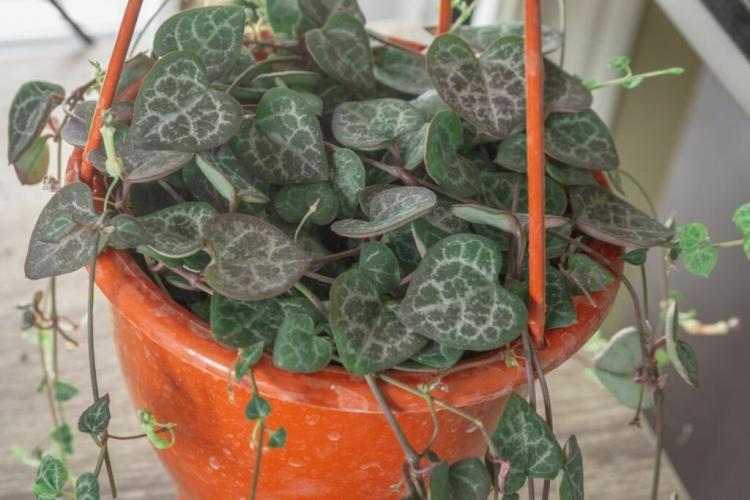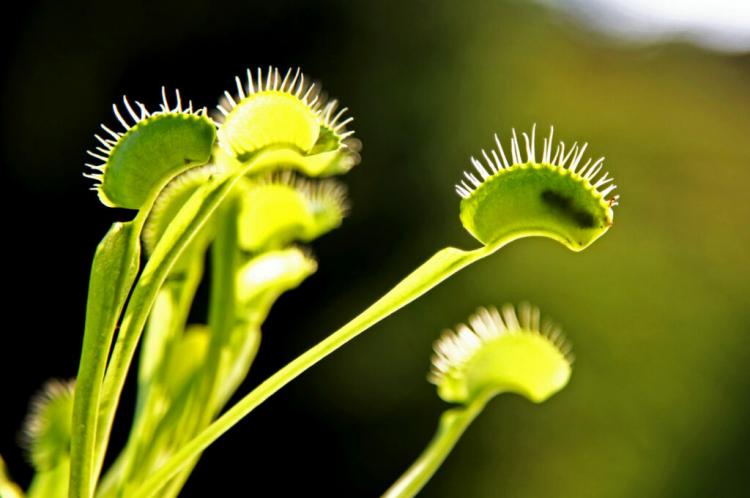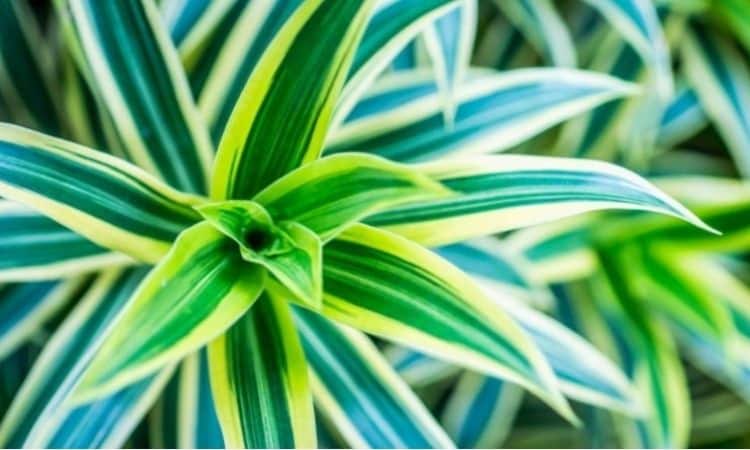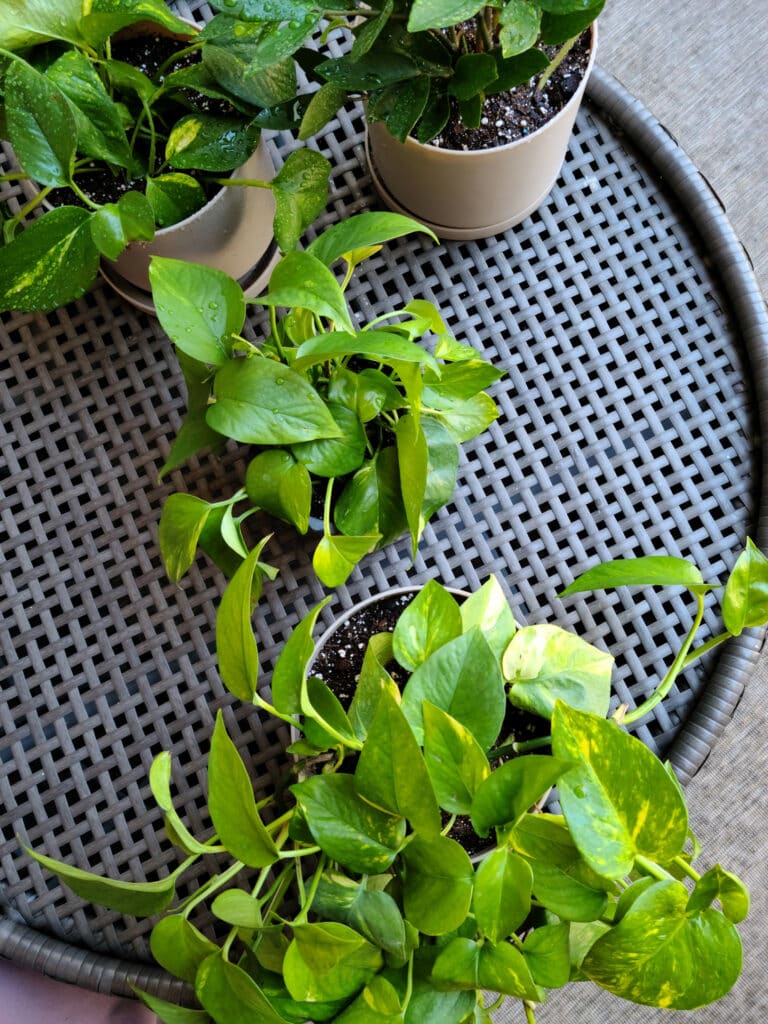String Of Hearts: Care, Flowering And Location
The String of Hearts plant belongs to the group of candlesticks and is very popular as a houseplant due to its decorative leaves and flowers. In addition, it is extremely easy to care for. We give an overview of the plant as well as some care tips.
The tropical succulent plant is particularly suitable for keeping in a traffic light pot, as it forms long shoots that hang out of the pot. In this article, you will find out what else makes the beautiful plant special, what you should consider when it comes to its location and how you can easily propagate the String of Hearts yourself.
A string of Hearts: flower, origin, and characteristics
Table of Contents
The String of Hearts or candlestick flower ( Ceropegia woodii ) belongs to the genus of candlestick flowers ( Ceropegia ) in the family of the dog poison plants (Apocynaceae). Originally from South Africa, it is now widely used in our homes. This is not least due to its beautiful leaves, whose heart shape gave the plant its name.
The leaves are gray-green with a white pattern and arranged opposite to each other on the long, tapering shoots. For this reason, the String of Hearts is ideal for a traffic light pot from which the shoots can hang down decoratively. When the String of Hearts blooms, pink, tubular flowers appear, which are reminiscent of candlesticks due to the darker-colored extension at the top. Ceropegia woodii is one of the succulents that store water in their plant organs and can thus survive long periods of drought.

The flowers of the String of Hearts are reminiscent of small candlesticks
Location, soil, and co. For Ceropegia woodii
The String of Hearts chandelier flower prefers a bright and warm location. However, direct sunlight should be avoided whenever possible. A room temperature of 20 to 25 ° C is ideal, only below 15 ° C does it slowly get too cold for the candlestick. During the rest phase in winter, the String of Hearts can also be colder, but the temperature should not drop below 8 ° C. The String of Hearts does not make any special demands on the humidity either, it feels comfortable in all rooms.
The substrate should definitely be loose and permeable. The String of Hearts also likes a certain amount of humus. A high-quality plant soil is ideal here. It contains clay minerals that ensure a good water balance in the substrate. By adding one part of sand to two parts of soil, you increase the permeability of the substrate and create ideal conditions for the candlestick flower. The planter should definitely have a drainage hole and the bottom should be covered with potsherds or stones so that no water can build up.
Tip: In summer, the String of Hearts can also be placed in a sheltered place on the balcony or in the garden. Direct sunlight, especially at noon, should also be avoided here.
A string of Hearts: care
Due to the low effort involved in the care of the String of Hearts, the plant is perfect as an entry-level plant. Succulents are quite forgiving and usually do not place high demands on their location. We show what still needs to be considered.
Watering the String of Hearts: Like most succulents, the String of Hearts should not be overwatered. The substrate is allowed to dry well in the meantime, then water should be given again. However, the root ball should never dry out completely. The plant generally needs more water, especially in very warm and bright locations and in the summer months. In winter it is sufficient to add some water to the substrate every two weeks.

Fertilize the String of Hearts: The String of Hearts needs some nutrients to grow. The shoots grow quickly in the growing season, at this time regular fertilizers are recommended. Organic fertilizer is an environmentally friendly and sustainable choice. Our Gardender organic indoor and green plant fertilizer not only protects the environment but also enriches the life of the soil with the microorganisms it contains. The main nutrients nitrogen and potassium ensure healthy, green leaves and strong roots. From April to September, it is best to add half of the liquid fertilizer to the irrigation water every four weeks.
Cutting the String of Hearts: The shoots of the candlestick flower can be cut off if necessary. This is best done in spring when the growth phase begins. The String of Hearts then begins to form new shoots. The cut parts of the plant can also be used for propagation.
Repot the String of Hearts: When the substrate is completely rooted, it is time to repot. This is also best done in spring so that the plant can grow well into its new substrate. The fresh soil also supplies the candlestick with new nutrients that ensure a good start to the growing season.
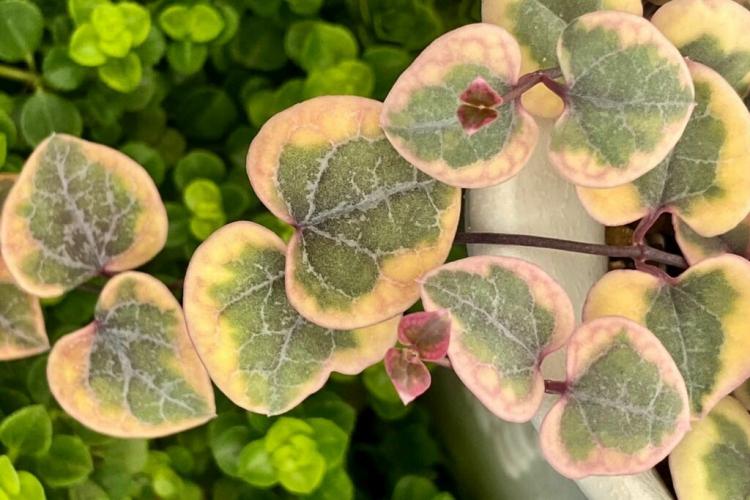
The String of Hearts gets yellow leaves: what can you do?
Depending on the causes of the yellow discoloration of the leaves, you can take different measures. Possible triggers are, for example:
- Excessive watering: The String of Hearts does not like waterlogging. Make sure to remove excess water from the coaster and only pour when the substrate has dried on. The best thing to do is to repot the plant in fresh soil.
- Direct sunlight: Too much direct sunlight can cause “burns” and the plant will develop brown or yellow leaves. Then place the String of Hearts in a less sunny, but still bright place.
Propagation of the String of Hearts: cuttings, nodules, or cuttings?
To propagate the String of Hearts, two methods can be used. The simplest method is to propagate using brood nodules. These are formed in the leaf axils of older specimens and can simply be picked and sprinkled on a fresh substrate similar to that of the mother plant. The container should then be in a shady location at around 17 ° C and the substrate should always be kept moist. A thin layer of sand on the substrate surface can help prevent the nodules from rotting. Since these are light germs, the sand should not cover the nodules.
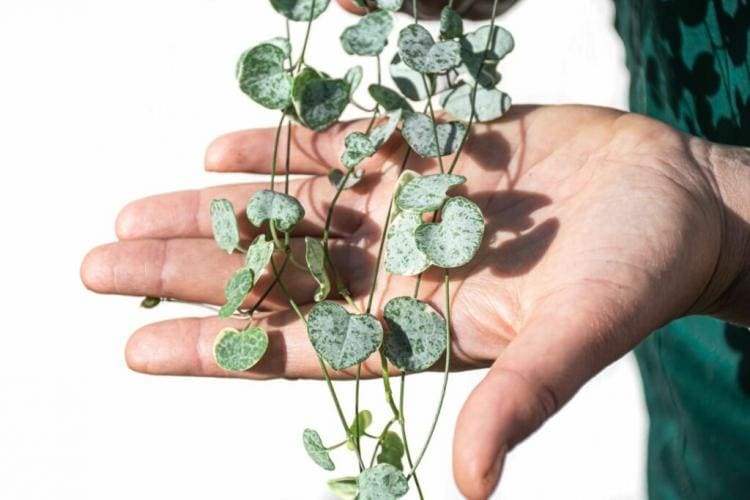
Propagation via cuttings is also possible without any problems. It is best to cut the shoots in spring. They should be about 10 cm long. Then let the cuttings dry for a few days and remove the lower leaves. The shoots can then be put into the moist substrate to form roots. This method also requires slightly cooler temperatures of around 17 ° C. However, a lighter place is suitable for the cuttings than for the nodules.
Is the Ceropegia woodii poisonous?
The String of Hearts belongs to the dog poison family. Many representatives of this family of plants are poisonous. Whether Ceropegia woodii is also poisonous has not been conclusively clarified. So far there are no signs of toxicity, but to be on the safe side, it is advisable not to let children and animals ingest anything from the plant.
